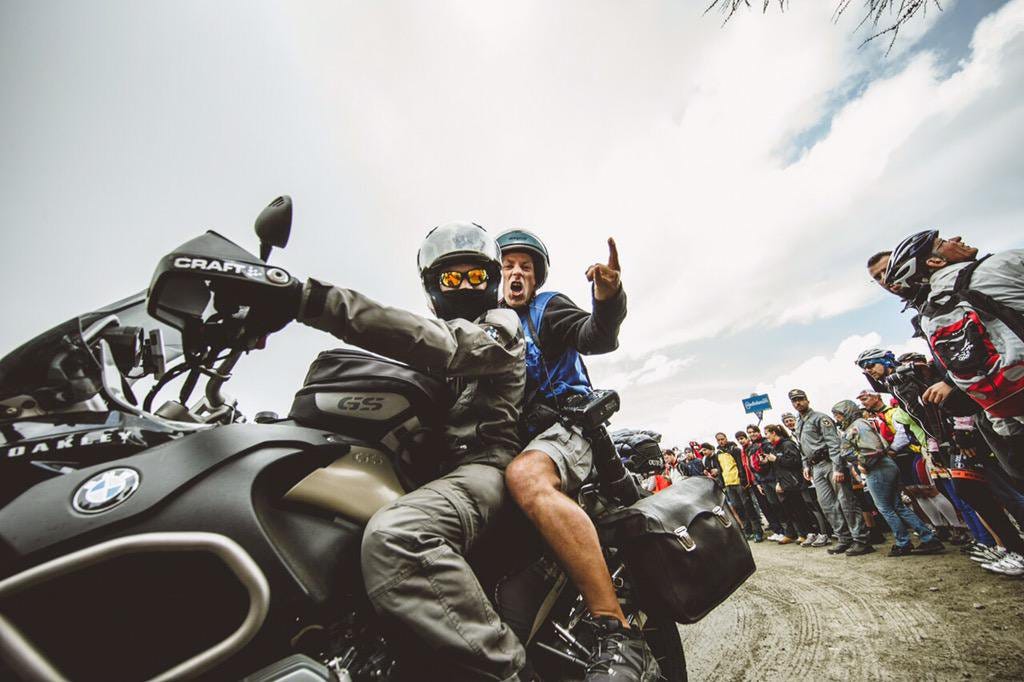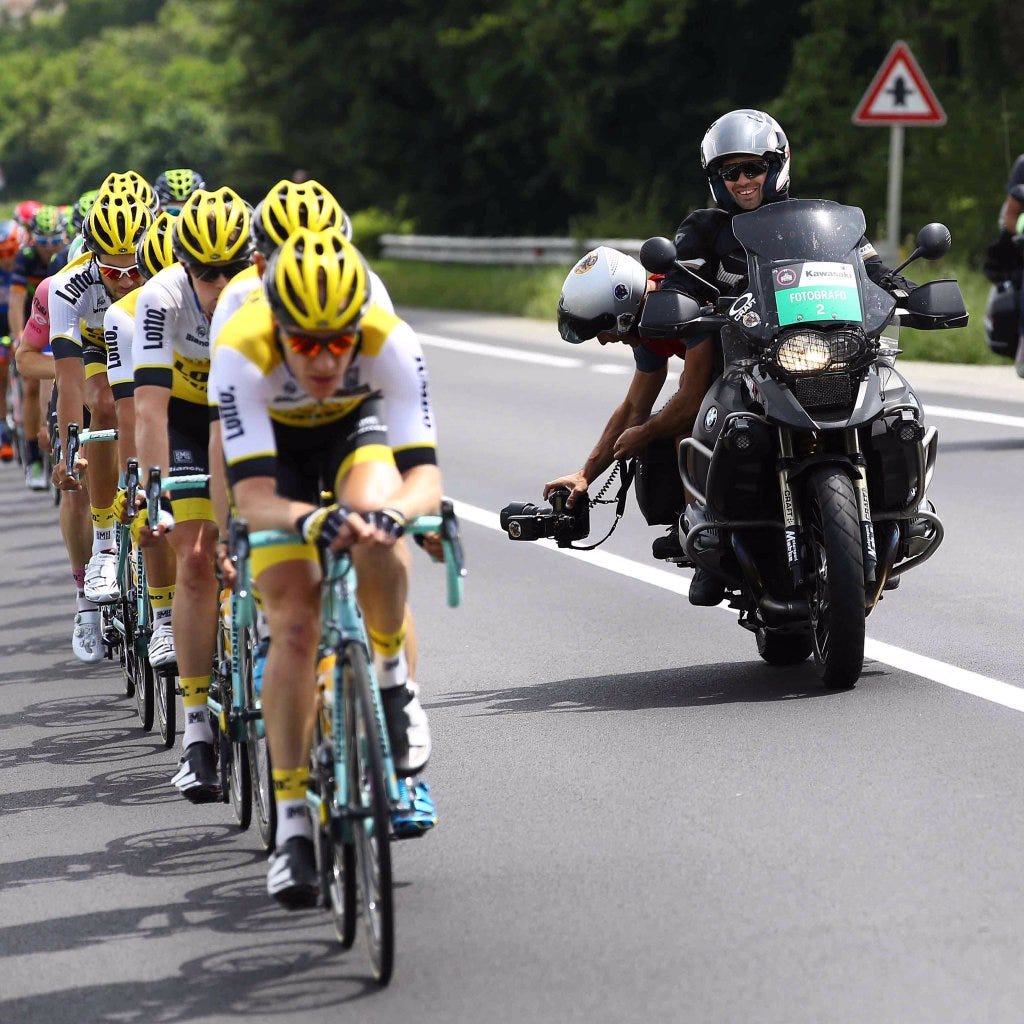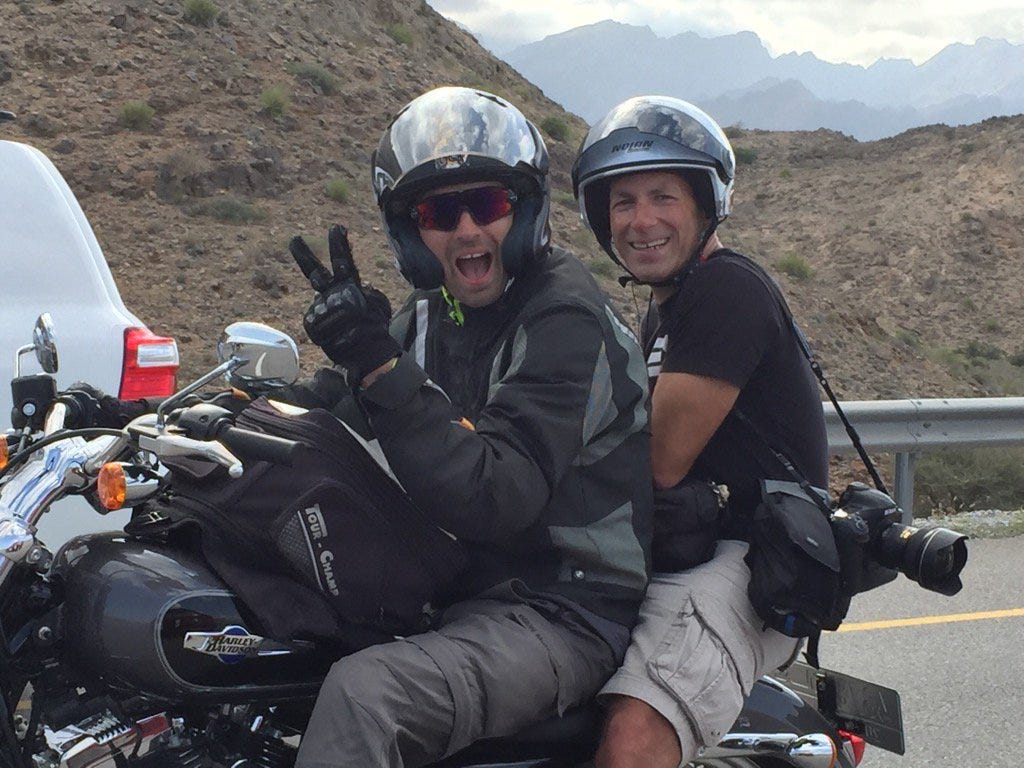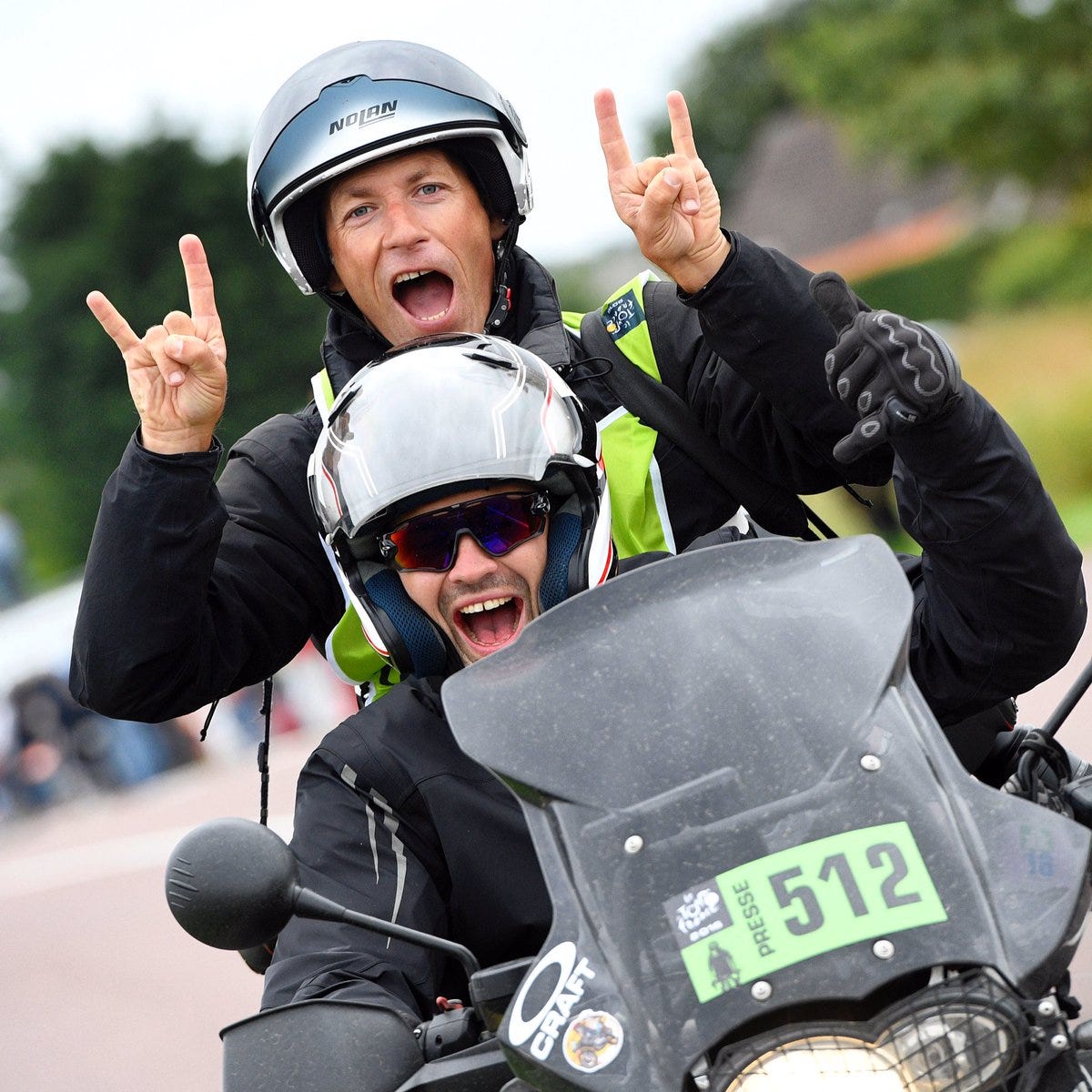
This interview originally appeared on the Cycle World website in August 2017, when I was Senior Editor.
Belgian motorcyclist Kim Tiebergyn has accomplished quite a bit in the 11 years since getting his M1 class license. The 32-year-old has become a regular fixture on the professional international bicycle racing circuit, piloting the likes of world-class photographer Tim De Waele. Tiebergyn has racked up an impressive race resume: nine times Tour of Flanders, eight times Paris-Roubaix, seven times Tour de France, seven times Giro d'Italia, seven times Milan-San Remo, and six times La Vuelta a España, to name a few.

The Grand Tours are brutal for everyone, including the drivers: in three weeks, there are just two rest days. And while it might look exciting to watch professional cyclists fly along at an average of 25 mph, it can be rather stressful for a professional photographer to be in the right place at the right time. Most European roads are narrow, crowned and lined with spectators.
This is where the skill and ability of the motorcycle pilot—not to mention an astute sense of where not to be among the rolling caravan—plays a key role in which photos get published online or in print. For years I reported on all the races Tiebergyn has driven, but never from the back of a motorcycle speeding alongside 100-plus Lycra-clad racers.
Every picture tells a story, so I spoke with Tiebergyn to learn more about life on the bike.
I started riding a motorcycle the moment I turned 21, which was 11 years ago. In those days you were able to ride unlimited engine sizes in Belgium.
The first bicycle race I worked on a motorcycle was a smaller amateur race in Flanders/Belgium, called 3 Daagse van de Gaverstreek. I rode a security motorcycle.
The process to become a certified bicycle race motorcyclist was rather simple. I was a cyclist myself. The moment I stopped racing it was easy to combine my passion for motorbikes and cycling. I worked myself up the ladder pretty fast. After getting acquainted with other motorcycle pilots they introduced me to some photographers. After that the ball started to roll pretty fast.

I'm a freelance pilot, but I work almost the whole year with the same photographer/ agency. I fill in the other free days with other agencies or television stations. They contact me and we check to fill in the agenda.
Like bicycle stories? Check out Bicycles Are Drugs.
Communicating with my photographer/videographer is simple: old-school style, just speaking. But when you have an experienced person in the back sometimes just body language is enough to know what to do. That, and wearing open face helmets.
The most important thing during a grand tour is staying sharp and fit. Then getting enough sleep is the second most important. During a Grand Tour I’ll ride an average of 8,500 km in three weeks.
It’s a given that whatever motorcycle I’m piloting has to be reliable. You almost need to have the feeling that you do when riding a bicycle: it must be easy to handle but still have enough power and strength to ride with two people and our equipment.
My favorite race is E3 Harelbeke. It's start and finish is a mere 5 km from my house. I know every road and every bump on the course. It's like my home race.
I don't have a favorite racer. You need to be neutral in my position, but I prefer the Classics riders over the Grand Tour riders. I’m Belgian!





This is awesome, great story. I had the opportunity in 2015 to be a Moto Pilot for the Tour of Calf and it was incredibly challenging. I'd do it again in a heartbeat! https://www.cycleworld.com/2015/06/16/ienatsch-tuesday-challenge-is-a-good-thing-serving-as-a-motopilot/
I love hearing the stories of those who help get the stories.